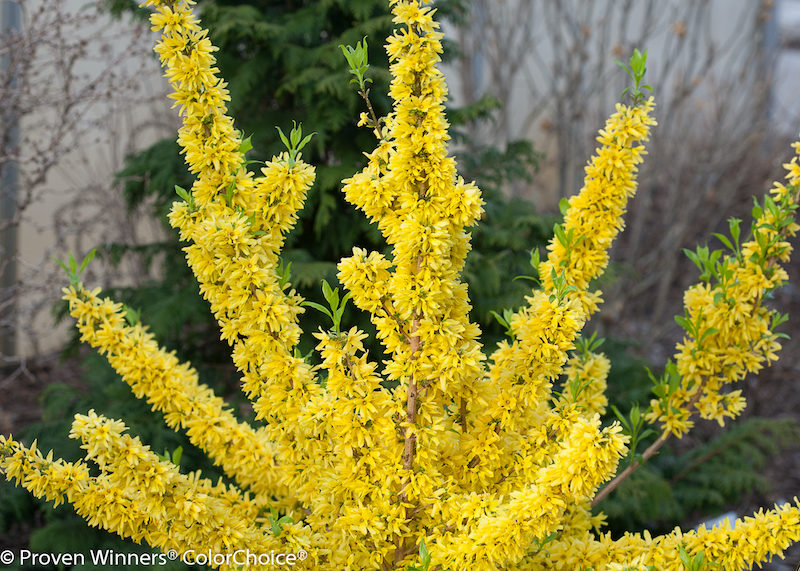Forsythia's sunny yellow flowers are one of spring's first signs of spring. This unique perennial has woody stems, and the flowers emerge before the foliage, making a stunning and lovely statement. Green leaves replace the flowers in summer, but the flowers are the reason this plant is so loved. While it is upsetting if your Forsythia does not bloom, there are solutions. Figuring out why the plant isn’t blooming allows you to solve the problem so you can enjoy the dainty yellow flowers next spring.

Common Reasons Why Forsythias Isn’t Blooming
-
Pruning
The main reason Forsythia plants do not bloom is that they received a poorly timed trim. Forsythia blooms on old wood, so this year’s new growth is next year’s old growth. Pruning the plant before the flowers emerge will reduce blooms, and trimming the plant late in the summer or during the fall or winter will also prevent the plant from blooming well.
-
Sunlight
Forsythia plants need full sun. Locate the plant in an area that receives about 6 hours of sunlight. Plants that receive limited light may become leggy and produce few blooms. Forsythia plants that receive too much light and not enough moisture may struggle to survive, and plants that are struggling may fail to set buds.
-
Fertilizing
Forsythia bushes are not heavy feeders, but a plant grown in poor-quality soil may not bloom. Undernourished plants may not be healthy enough to bloom. Plants that receive the wrong type of fertilizer, particularly formulas high in nitrogen, may also fail to set buds.

Pruning Forsythias To Help It Bloom
Prune Forsythia after the flowers fade, but before the plant starts to push out new branches. Late spring into early summer is the ideal time to trim Forsythia. Some gardeners prefer a more manicured look, but this plant does not need to be trimmed every year. Removing overgrowth will enable the plant to direct energy into new growth and flowers. Forsythias bloom on old growth, so avoid removing branches late in the season because this will limit next spring’s flowers.
Fertilizing Forsythias To Help It Bloom
A well-balanced diet will help Forsythia bushes thrive. This plant is not a heavy feeder, but amending the soil with organic compost or manure when planting supports abundant growth. Apply a slow-release granular fertilizer with a 20-20-20, 20-30-20, or 18-24-16 NPK ratio. Feed Forsythia every few weeks from spring through fall.
Get Forsythias To Produce More Blooms
Healthy plants will set buds and bloom. If your Forsythia shrub is not blooming, it’s time to get back to plant care basics. Ensure the shrub receives the proper amounts of sun and water. Feed the Forsythia plant using a slow-release granular fertilizer every few weeks during the growing season, and only prune the plant after the blooms fade, around early July.

Why Forsythias Isn’t Blooming
- Poorly timed pruning
- Improper amounts of sun
- Insufficient fertilizer
 |
Author Alison Cotsonas - Published 09-17-2022 |
